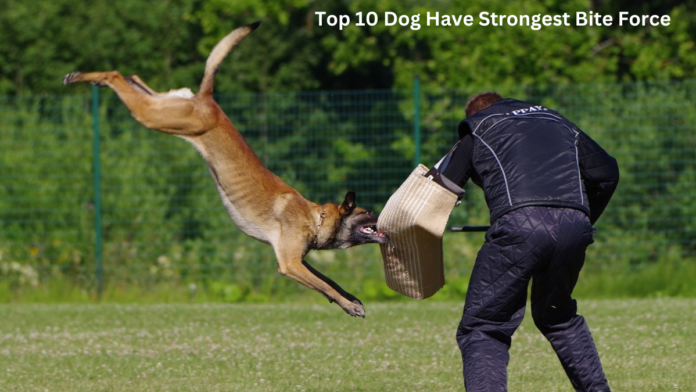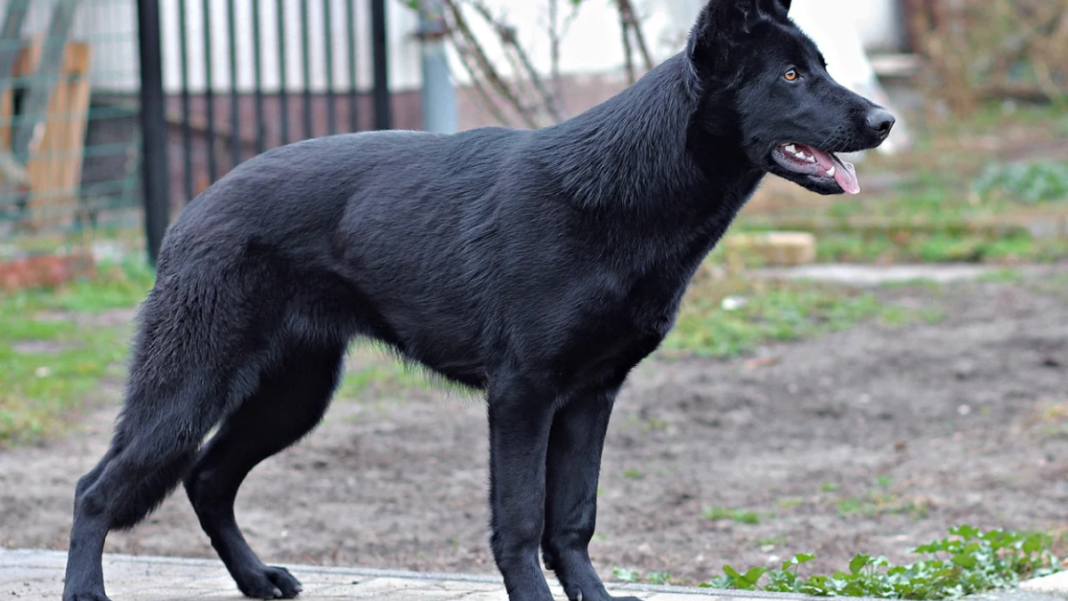While researching for having a pet dog, it is very important to know that every dog breed has different biting forces and dogs don’t bite often without any reason. Some dogs bite due to their anti-social behavior and are trained to be aggressive. Many dogs are specialized in such as way that they are intelligent and have more strength, while others have poor ownership. Norfolk-based animal behaviorist and trainer, Sarah-Jane White has measured the strength of dogs by looking at the pounds per square inch (PSI) for each breed.
Let’s learn about the science behind the biting force and PSI of these top 10 dog breeds’s bite force. So, keep reading as we will reveal what dog has the strongest bite force in the Canine World.
Dog With Strongest Bite Force, From Cane Corso to Siberian Husky
In the series of knowing what dog has the strongest bite force, let’s know about the top 12 strongest bite force dog:
1. Cane Corso Bite Force
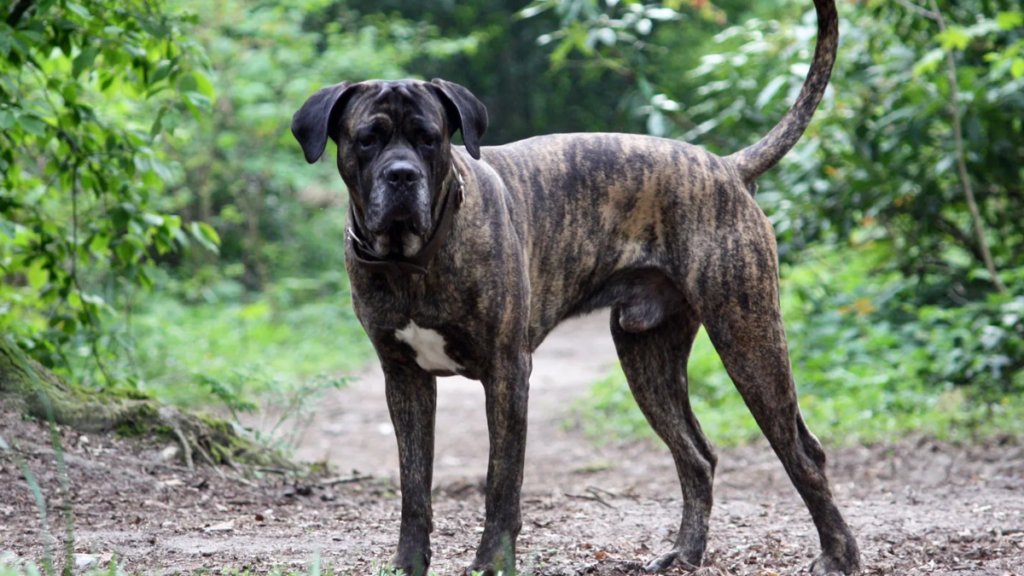
Extremely large and have massive heads and mouths – Cane Corso, Bite Force 700 PSI, commonly used as a trained guard dog in the United States to use powerful bites against intruders. The Cane Corso boasts one of the dog with strongest bite force which gives it a position as one of Italy’s most revered canine breeds. Originating from ancient Roman history, these dogs have become known for their magnificent heads and luscious coats that appear either jet black or fawn. These loyal and clever dogs can be overprotective of their food and their loved ones presenting a possible risk to strangers.
2. Pitbull Dog Bite Force

Pitbull , Bite Force 235 PSI are muscular, playful, and affectionate, these dogs have a lot of energy and win the game of Tug of War with their people. Not only will they not let go, but their legs are all muscle, so you might just get hauled along when they pull! The term Pit Bull generally refers to either an American Bulldog or a Staffordshire Terrier. These are quite similar breeds. Pit Bulls are medium-sized, very muscular dogs built specifically for fighting and hunting. Pit Bulls are extremely temperamental and many of them are extremely aggressive. The most common culprit in strongest dog bite force attacks is the pit bull. This is because their bite force is quite strong for the size of their body – seventh in the rankings, but their speed and aggression, that’s what makes them so dangerous.
3. German Shepherd Dog Bite Force

German Shepherd, 238 PSI. German Shepherds are a highly intelligent and athletic breed of dog. First bred in Germany for herding sheep, German Shepherds have become famous for police and military service, with a powerful jaw driven by a strong prey drive and an ability to lock onto a target. Because German shepherds look and act friendly, kids love to play with them. Unfortunately, often dogs can’t define between a play fight and a fight. As a result, the German shepherd’s bite force may be applied to the limbs of a young child.
4. Kangal Bite Force
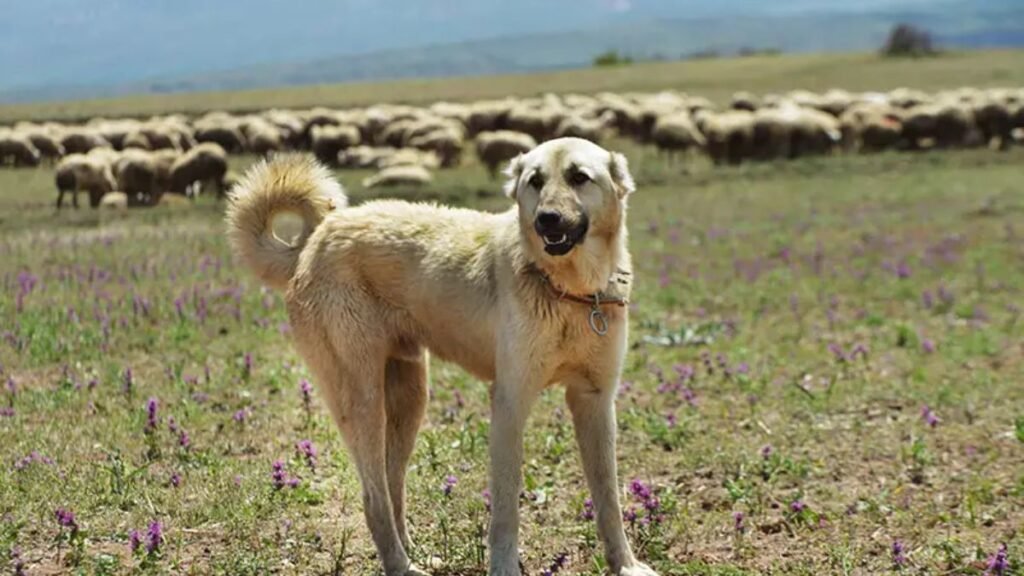
What dog has the strongest bite force? The answer is Kangal Dog With Strongest Bite Force of 734 psi, the Kangal certainly has the world’s strongest jaws. Breeding them in Turkey was a way to drop larger animals preying on sheep and other livestock, and these puppies are masters at neutralizing danger! Gentle with children and domesticated animals, they make wonderful guard dogs and playmates! Most people assume that Cane Corso is the strongest bite force dog, but it’s Kangal. The combination of strength, size, and head, and jaw shape can make a bite power strong.
5. Rottweiler Bite Force
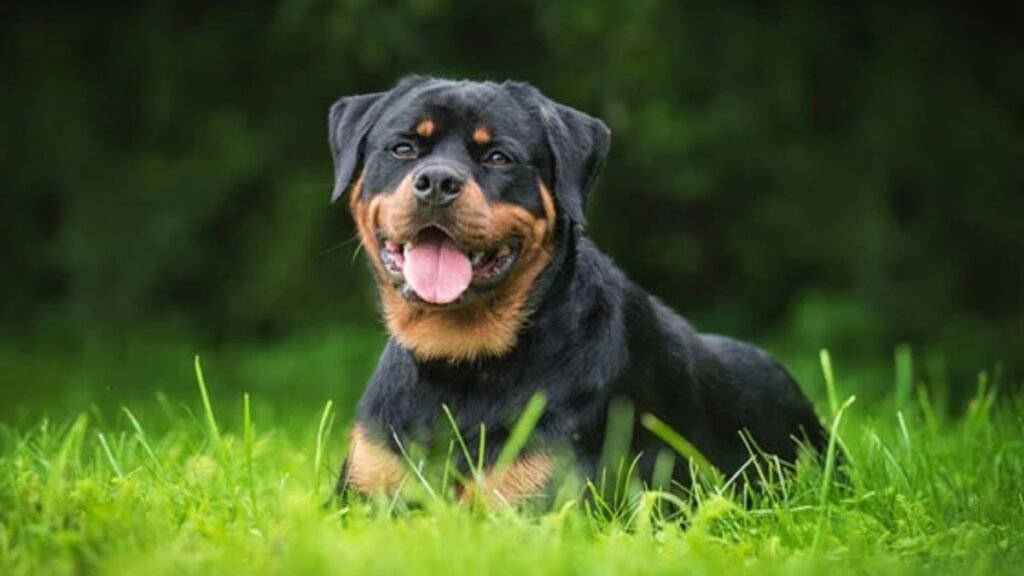
Dog with strongest bite force in German dog breeds is Rottweiler. They are sort of the linebackers of the dog world, and also they are the strongest breed in the pound-to-pound comparison. Not a surprise that it has one of the strongest bites that comes with a large head and powerful jaw muscles. With a bite force of 328 PSI, the rottweiler is similar in temperament to an American bulldog. It’s friendly and good-natured most times, but it can be aggressive at any given moment when it feels that there’s a threat. When that time comes, it becomes a fearful animal though not trained to attack.
6. Doberman Bite Force
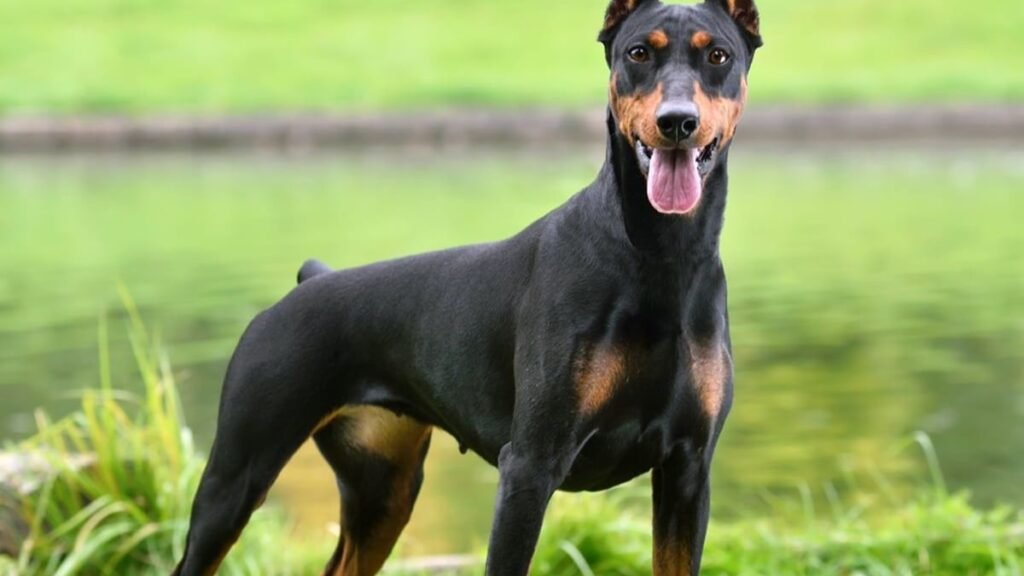
The Doberman’s bite force is at 229 PSI. When bred and used as a guard dog, a Doberman can grow very protective of its owner and even possessions. Its instinct towards the safety of its members may cause aggressive reactions in the form of a bite. The Doberman is indeed an attractive breed. Its elegant frame and impressive growth spurts make it a beautiful animal. For this reason, they are faithful companions to families, thus suitable guard dogs. This may be quite a ferocious breed, but given enough exercise they are very playful. Otherwise, they can become a bit too rowdy or destructive, so the children must live with these dogs right from birth, so they will form lasting bonds and create an atmosphere that’s kid-friendly.
7. Belgian Malinois Bite Force
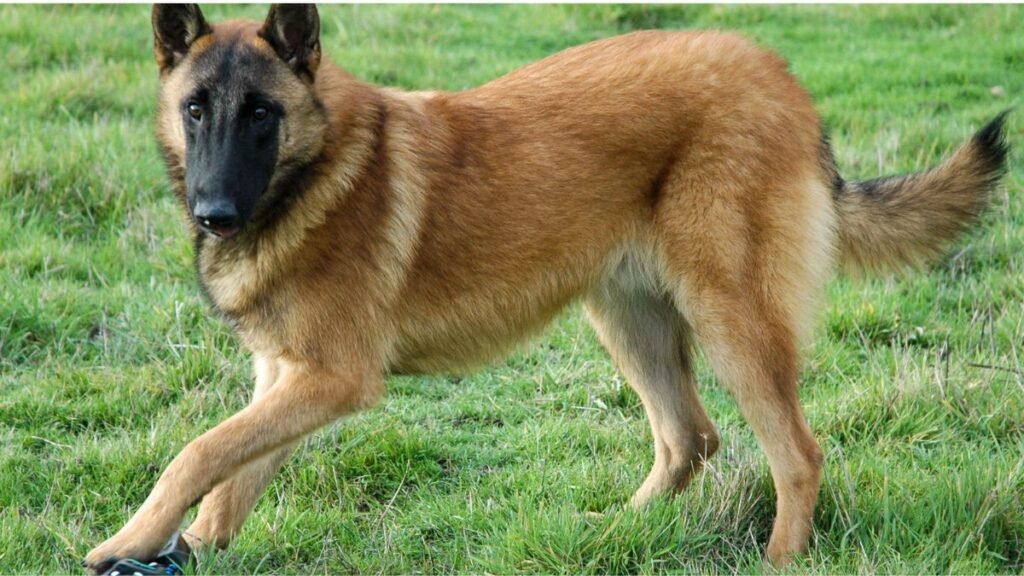
Belgian Malinois has a bite force of 200 PSI. Belgian Malinois are more or less part of the German Shepard family; they are indeed one of the most popular breeds of working breeds in the US and are viewed as police and military dogs. Looking quite like a little German Shepherd, the Belgian Malinois are on their toes: alert, brave, smart and funny too. They are very muscular with strong jaws. A Malinois puppy on a chewie puts 195 psi on it. Because of such incredible jaw strength, those loyal pooches make the best guard dogs to protect their packs, human and canine alike!
8. Dogo Argentino Bite Force
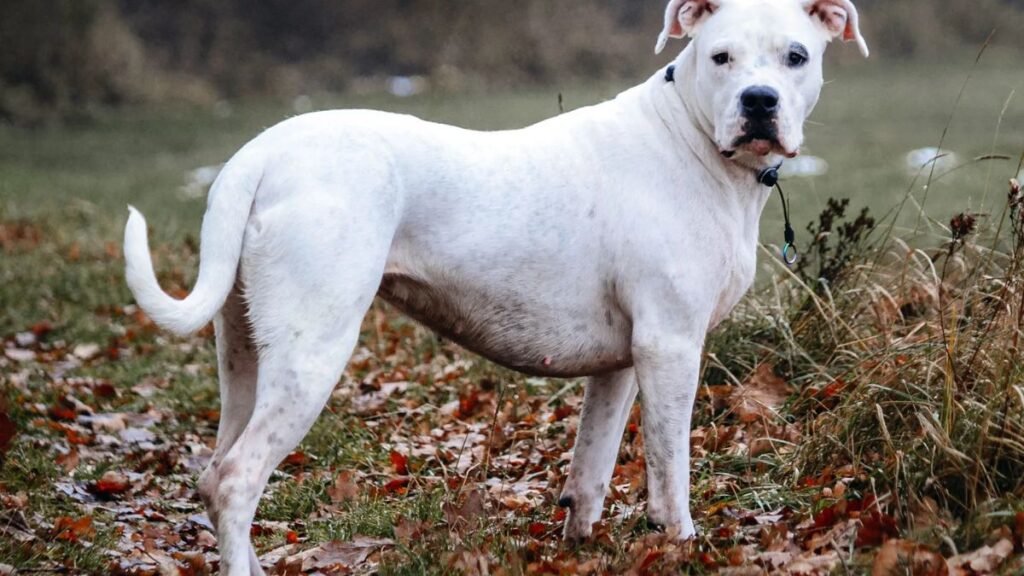
Dogo Argentino bite force is 500 PSI. Despite the Dogo Argentinos’ tendency for natural aggression, these dogs don’t attack randomly. With the right training and socialization from a young age, they can make an excellent addition to your family; being loyal guardians as well as expert hunters who could even provide you with dinner if trained properly! Bred specifically for its hunting skills, the Dogo Argentino boasts an unyielding commitment to protecting their owner. Originating from the powerful Cordoba Fighting Dog and with a strong bite force that can take down wild boars and buffalos, it’s no wonder why many are in awe – or terrified – of this impressive breed.
9. Great Dane Bite Force

A Great Dane’s bite force is approximately 238 pounds per square inch (PSI). This is stronger than a human’s bite force, which is typically between 160 and 200 PSI. The Great Dane is generally recognized as being the tallest dog breed in the world. Despite its imposing size and the strength that comes with it, the breed is also known as a gentle giant. They are often affectionate and loving, although they don’t always seem to know just how big they are!
10. Husky Bite Force
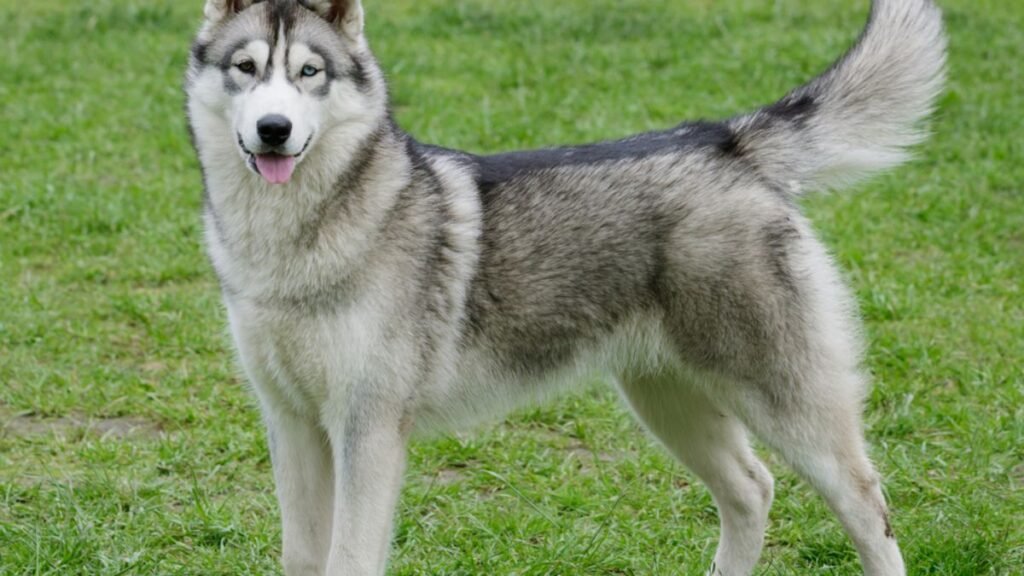
The Siberian Husky is a medium-sized working dog breed from the Siberia region of Russia. Huskies were bred to pull sleds, and they are generally known for their high energy and friendly temperament. The Husky has powerful jaws capable of exerting strong force but is not aggressive and rarely involved in attacks. A Siberian husky dog bite force is around 320 pounds per square inch (PSI), which is considered very strong. However, some other dog breeds have stronger bite forces.
11. Japanese Tosa Bite Force
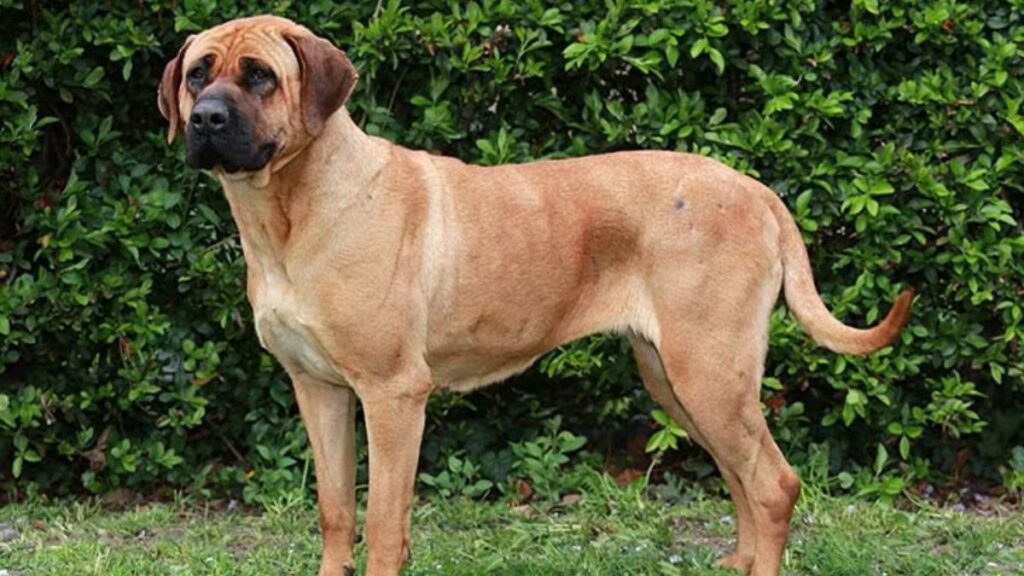
Japanese Tosa is Dog with strongest bite force, They have a bite force of 556 PSI. One of the most dangerous and powerful dogs, they are among the list of dogs banned in the UK. The Japanese Tosa (also known as the Japanese Inu) is a robust canine that was initially bred for fighting. Thankfully, they have moved away from that practice and are used more commonly as watchdogs. Their size and deep bark would intimidate strangers! Despite that, with the proper training, they can be incredible companions and loyal to their families.
12. Boreboel Bite Force
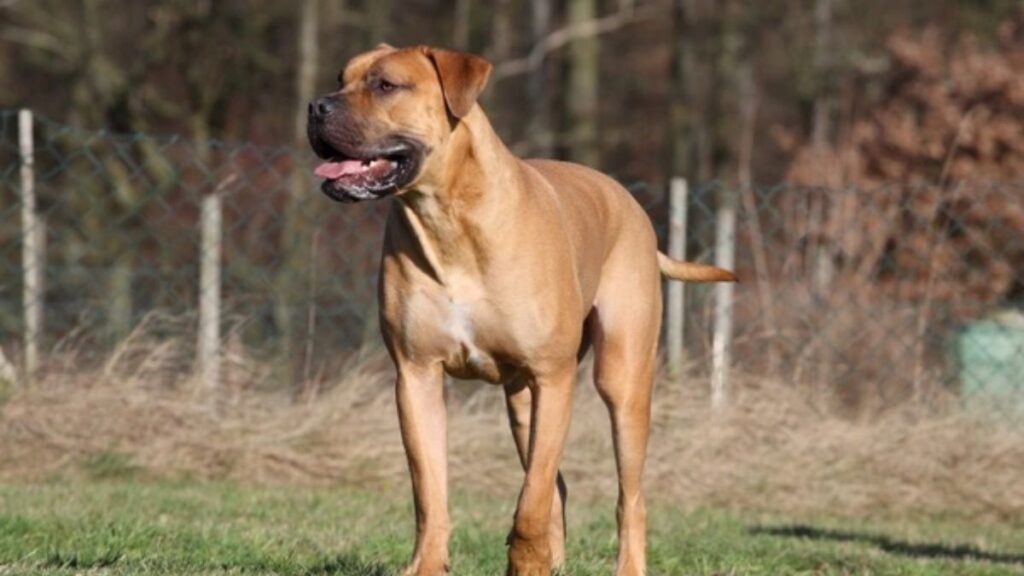
The South African Mastiff has a bite force of up to 800 pounds per square inch (psi). Boerboel, which means “farm dog,” is the second breed to be introduced. AKC only recognized them as a bona fide dog breed in 2015, making them a relatively new breed. This breed originated in South Africa and supposedly hunted lions. However, these are just fables, just legends. Yet judging purely by size, there seems to be little appealing doubt of a vehement bite force. They were used as devoted and trusted protectors of livestock.
How To Calculate Dog Bite Force?
The biting force is an important functional indicator of the masticatory system. It is produced by the craniomandibular structures that include the jaw adductor muscles, TMJs, and teeth.
In dogs, the major contributors to bite force are the jaw adductor muscles. The temporalis, masseter, and medial and lateral pterygoid muscles are some of the muscles of the jaw adductor muscles. They close the mouth, control jaw movement, and regulate the force of a dog’s bite. The generation of bite force in dogs depends largely on the jaw adductor muscles. These muscles include the temporal, masseter, and medial and lateral pterygoid muscles. These are the muscles that close the mouth, determine the jaw movement, and control the force of a dog’s bite.
| PSI, or pounds per square inch, is the force measured in pressure units exerted by the jaws of a live being on one square inch area. The bite force is related to jaw shape in domestic dogs, the higher the rating of PSI, the higher the jaw power, and the more severe the injuries suffered due to the biting incident. |
Factors That Affect Dog Bite Force
Even among breeds, various factors determine the strength of a dog’s bite:
- Size: Bite force correlates with the body size depend on the breed of the Dog
- Shape: This relates to the dog’s head shape, such as brachycephalic (short), mesati-cephalic (medium), or dolichocephalic (long).
Note-The above mentioned information is garnered from the the article: “Bite Forces and Their Measurement in Dogs and Cats” published by PMC( PubMed Central), PMCID: PMC5932386.
- Training and Aggression Levels: Since animals learn from their conditions, those dogs conditioned for protection will show more bite forces. However, aggression is not necessarily correlated with the dog bite force.
- Jaw Musculature: Genetic predisposition or exercising will contribute directly to jaw strength.
- Age and health: Young puppies and older dogs in senior years will bite with more minimal force when compared to healthy young individuals.
- Breed-specific characteristics: Some breeds have physical features, such as powerful jaws or sharp teeth, that can cause more serious injuries.
Common Types of Dog Bite Injuries
1. Abrasions
Abrasion is the term used to describe superficial wounds such as grazes and scrapes that don’t penetrate deeper than your epidermis. Most of the time, when you get abrasions from a dog attack, there isn’t much bleeding, but sometimes you may end up with scars. Most of these wounds can be treated at home, but you may want to go to the hospital to ensure that you don’t have any infections or complications. In addition, medical records can be crucial when you file a lawsuit.
2. Lacerations
Lacerations are deep cuts or tears in the skin. They cut past the epidermis and into the muscles, bones, nerves, and blood vessels of your body. Often, these wounds are marked by uneven, zig-zig patterns and excessive bleeding. To treat lacerations from a dog attack, you need medical attention and stitches. Do not attempt to close these wounds with skin repair tape. That can trap infections and make things worse.
3. Punctures
Punctures occur when the dog’s teeth puncture or pierce your skin. While these wounds may be much smaller than lacerations, they tend to be deeper. That increases the risk of infection, so medical attention should be sought even if the bleeding isn’t profuse.
4. Infections
Approximately, 10 to 15% of dog bites result in infections. Typically, infections arise from bacteria that are found within the mouth of the dog. However, germs or bacteria on your skin can also lead to infections. That is why it is essential to clean all your wounds. You should be aware of signs of infection too, which are pain, redness, swelling, and pus. In some cases, the site of the infection may feel warm to the touch. If you see any of these symptoms, contact a medical professional right away. They should be able to give you antibiotics to counteract the infection.
5. Rabies
The worst infection you will get from a dog bite is usually rabies. Rabies kills around 50,000 people per year worldwide. Once you have been bitten, try to determine if the dog has received a rabies shot. If it has not or you cannot find out, rush to the emergency room. They can administer some special treatments that prevent rabies from developing.
What To Do If You’re Bitten by a Dog
Being bitten by a dog is shocking and can be very painful. In case you experience this bad luck, follow these steps:
1. Get out of harm’s way:
First of all, remove yourself from the danger zone as quickly as possible. Locking yourself in a room or a car may help in case the dog does not let go.
2. Wash the wound:
Clean the bite with soap and warm water for several minutes.
3. Control bleeding:
Apply pressure with a clean cloth to stop any bleeding.
4. Assess the severity:
Determine if immediate medical attention is required. Even if you don’t feel too much pain, some injuries take hours or days to manifest. It’s better to get a medical evaluation as this will document any injuries should you decide to pursue compensation in the future.
5. Seek medical attention:
Even with minor bites, you should go see a health provider because infections are a potential risk. A health provider will help you disinfect the wound appropriately and administer the required vaccinations.
6. Gather information:
If possible, get the dog owner’s contact information and details about the dog’s vaccination status.
Note: If the bite has caused severe injury or costs, then legal advice from an experienced dog bite injury lawyer can be very helpful in getting compensation.
FAQs
Q1. Which dog has the strongest bite force?
“The Kangal Shepherd” is a Turkish breed dog known for its massive size and impressive strength. With a PSI of 743, this breed is undoubtedly the king of the canine world in terms of raw power.
Q2. What is the most aggressive dog?
Pit Bulls. This won’t be a surprise to anyone because Pit bulls, as lovable as they are, have a bad reputation for violence. The term “pit bull” is a catch-all that’s become commonplace.
Q3. Which dog can defeat Kangal?
Turkish Kangals are great protectors, but some breeds like Central Asian Shepherds, Caucasian Ovcharkas, and Tibetan Mastiffs are said to be equal to them in terms of strength and courage.
Q4. Which dogs are banned due to their bite force?
These are the banned dog breeds: Pit Bull Terrier, Tosa Inu, American Staffordshire Terrier, Fila Brasileiro, Dogo Argentino, American Bulldog, Boerboel, Kangal, Central Asian Shepherd Dog, Caucasian Shepherd Dog, South Russian Shepherd Dog, Tornjak, and Sarplaninac.
Q5. What is the top 10 strongest dog?
Some dog breeds have incredibly strong jaws and muscular bodies. Here are the top 10 strongest dogs ranked by their bite force (measured in PSI – pounds per square inch):
- Kangal – 743 PSI (Strongest bite force of any dog breed)
- Boreboel – 640 PSI
- Cane Corso – 700 PSI
- Dogo Argentino – 500 PSI
- Rottweiler – 328 PSI
- Japanese Tosa – 556 PSI
- German Shepherd – 238 PSI
- Doberman – 305 PSI
- Pitbull – 235 PSI
- Mastiff – 552 PSI
